Finally slaying the ancient dragon that was my Guide to Legion of Super-Heroes inspired me to keep track of all of the many steps and processes it takes to put together a new comic book guide.
I think more people making more great guides to consuming comics (and other media!) makes the internet better for all fans. I love Omar’s Near Mint Condition video Reading Orders, How To Love Comics’s guide to reading your first comic, ComicsXF Primers, and ComicReleases solicits roundsups. All of them overlap with what I’m doing a little bit, but they’re all helping people find the comics they might love, which is why I started doing this in the first place.
Below I’ve listed my process for putting together a comic guide, which is also how I build a personal reading list or new comic collection! When I get interested in a new character, author, or title for the first time, my approach is almost identical to guide-building, even if I don’t plan on making a guide.
Throughout the list, I used my well-established Excalibur Guide and my new Patrons-only Legion of Super-Heroes Guides as examples. I tried to share some interesting behind-the-scenes nuggets along the way for all of you process wonks.
Feel free to use this guidance to help you put together your own handy guides, whether that’s for personal use or on a website. I certainly have some “secret sauce” and proprietary tools that help me make my guides so definitive, but anyone could work through this checklist to figure out a comics property from top to bottom. It takes me anywhere from 4 to 30 hours, depending on the complexity of the character or title I’m researching.
Here’s the breakdown of my steps.
- Create a list of series or volumes
- Decide on scope
- Organize (but don’t over-sort)
- Research your series list (this will include narrowing and expanding)
- Compile a collected editions list
- Assemble the stuff
- Conduct a clean-up pass
- Consider the meta-data
- Enjoy! (No, really! Make a plan for enjoying this hard work.)
- Schedule your first check-up
Now, let’s dig in!
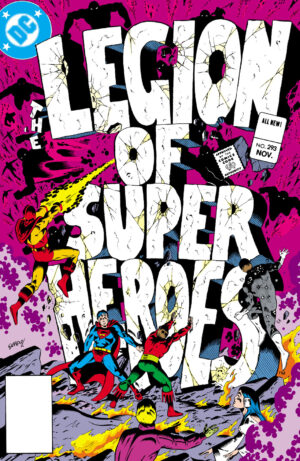
1. Create a list of series or volumes
Your initial goal is to create a list of what might be “in” for your guide, list, or collection.
You don’t have to start by going broad. It’s fine to begin looking into or reading the thing that got you interested in the first place and then following it into other titles as you go.
This is easier when you’re working on comic with a singular run, like my Guide to Spawn. If you’re attacking something with more material – like “Legion of Super-Heroes” or “X-Men” – you might decide to start by casting the widest net possible to catch your titles. You might have an even bigger topic than that, like “all comics with Blue Beetle,” “all Stan Lee comics,” “all comics released in 2021,” or “all comics about Mars.”
ComicBookDB used to be an amazing tool for series research like this. Now, I’d recommend using a mix of DC, Marvel, and Image Fandom communities and other wiki-based sites like League of Comic Geeks, Comics.org, ComicVine, or even Wikipedia.
The search on Marvel Unlimited and DC Universe Infinite can also be a huge help! Finally, you can search on the Previews website for most releases since 2000 – though that will bring up individual issues, which can get overwhelming. (Try narrowing the search only to “Graphic Novels.”)
In being mindful to eliminate future re-work, this is a good time to note any information that exists on the entire series level rather than the issue level. That includes the dates the series ran, the number of issues, or even a link to the page you’re using to refer to the series.
For more-encompassing topics like themes or styles of illustration, sometimes it’s useful to get out of the comics space and onto a book-oriented resources like GoodReads, Amazon, or even the Library of Congress catalog. Heck, don’t discount the use of Google’s “site:” search on a publisher’s domain!
Just remember: every wiki has a perspective, even if that’s a perspective of neutrality. And, they’re only as good as their worst contributors! My perspective is always for my list to be the most exhaustive list anyone has ever created, and sometimes I need multiple sources to get there.
Click for insider info on Excalibur and LOSH
2. Decide on scope
This seems obvious, but it’s not!
Will your X-Men guide include all comics with the word “X-Men” in the title? Will your Spawn guide only cover the main Spawn series?
Do non-continuity books qualify? Are you going to track every appearance of a character… even cameos?
What about book format – do you care about digest-sized paperbacks? Does an essay in a prose collection count for your Author guide?
I’ve found that if I don’t make a firm decision up front that my guides will go through endless revisions while I fiddle with their scope. And, when it comes to collecting, it leads to buying stuff I’ll never actually read.
When you’re dealing with a property with hundreds of issues, you want to avoid re-work. Every time you have to re-order your order or re-check your wishlist you multiply your work effort.
That doesn’t mean you have to start with the widest scope. That can make it hard to get a project past the initiation phase. It’s fine to pick an arbitrarily tight focus. Just pick something.
Note that deciding on the scope doesn’t mean you can immediately eliminate things. Even if you decide on every book with “X-Men” in the title, one volume of X-Men Forever was a mini-series and the next two were alternate reality books. I didn’t know that until I researched!
This is just about deciding what’s in contention and what’s out based on the kind of guide or collection you are assembling.
Click for insider info on Excalibur and LOSH
3. Organize (but don’t over-sort)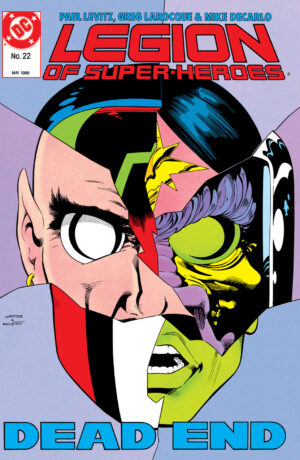
This applies whether you’re building a guide or filling a shelf. Deciding an initial organization up front saves you time later.
Will things be chronological by release date or by continuity? Or, do you have your own magic sorting order, like doing a ranking or only shelving books you’ve re-read?
How will you keep track of the organization as you go? I’ve done everything from spreadsheets to hand-drawn flow charts to snapping pictures of a shelf as I re-arrange it.
Here’s the important part: Decide early but don’t re-sort often. Sometimes the shuffling of stuff on your outline or on your physical shelf winds up taking more time than building your guide or collection. The shuffling is not the work!
Start by trying to keep things organized, but only go back for a shuffle when you’re done or when things have become too much of a mess to make sense. And, be open to the idea that you were totally wrong at the beginning and have to reorganize from scratch.
Click for insider info on Excalibur and LOSH
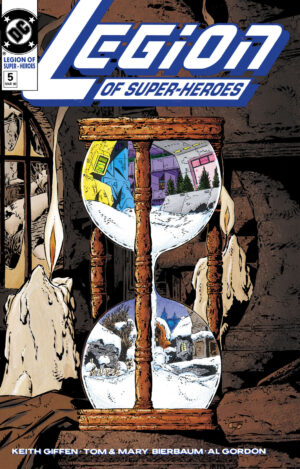
4. Research your series list (this will include narrowing and expanding)
This is where the hard work begins.
If you are working from a series list, you need to check every title to decide if it is in or out of scope. I’ve found the magic trick for this is often to read solicits for the first issue, first arc-end, and and first collection. You can find those Previews search, on Fandom, and often on publisher websites.
If your scope includes a full character chronology or something thematic, you need to find every qualifying comic within your scope. I find the Fandom sites aren’t organized enough or accurate enough to easily pull this data. League of Comic Geeks is probably your best current option for characters
(Keep in mind that not every “appearance” is an appearance. For almost every wiki-based site, people will list an “appearance” even for a cameo or a memory. )
While doing this research, I find that I add things to my outline as often as I cross them off. Frequently you see something in one issue that leads you down a rabbit hole into a totally different series that wasn’t on your list before.
I’ll be honest – for me, this step usually involves paging through every single issue or character appearance. That’s part of why my guides are definitive. I might not read everything, but I do check everything!
For me, this used to involve indiscriminately buying a huge collection of stuff. I’d recommend against that tactic. Having Marvel Unlimited and DC Universe makes this more feasible today than it was even three years ago, but the recent death of Comixology made it harder for indie titles. However, there’s ways to do this without looking at the actual issues. Browsing each issue of a run on any of the comic wiki sites I listed above will be helpful.
Again, re-work is your enemy. This will be the step where you are closest to the actual issues before reading them. If you are going to need cover images, panel screenshots, creator names, or anything else at the issue level, now is the time to track them. It’s also the point to try to decide on reading order, if that matters to you.
Click for insider info on Excalibur and LOSH
5. Compile a collected editions list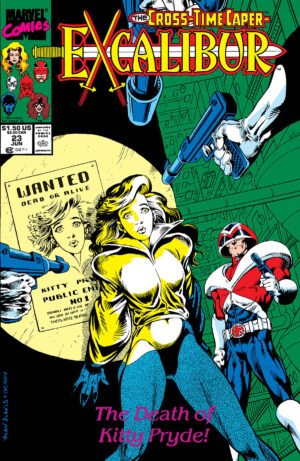
If you’re only collecting single issues, you’re in luck – you can skip this step!
If you’re working on collected editions, this is the hardest part of building your guide or shelf. Now that you know every series or appearance that is in scope, you have to figure out how they broke across collected editions.
For a modern comic from the trade era of 2004 to present, you’re probably looking at a one collection for every 6 issues, unless the run has been heavily recollected in fat trades or omnibuses.
For an older comic that has been well-collected in various archival editions, it might be more like one collection for every 10-12 issues. Really, the best case scenario is something with a comprehensive omnibus line – they’re expensive, but they cover a lot of ground quickly!
Here’s what I’ve learned from doing this tens of thousands of times across hundreds of guides: Solicits lie (or, at least, can be changed) and no Wiki is 100% trustworthy.
Hell, I’ve even seen the backs of books have the wrong contents listed!
If you are relying on secondary sources, you need at least two sources that are not copy/pasting the solicit text. And, be sure you have the correct ISBN! Often different comics collections of the same material have similar names and covers.
Whenever possible, the best option is opening the book itself. I’m not saying you should buy every book! However, many books offer online previews of their opening pages, which include their indicia – the tiny print at the bottom of their title page, In more than 9 out of 10 comic collections, the indicia will include the most-complete version of the contents.
Also, don’t forget that libraries exist! Your local library might have all of the collections sitting on a single shelf, which makes your job so much easier. Or, they could even have a digital lending system – many US libraries use Hoopla.
Click for insider info on Excalibur and LOSH
6. Assemble the stuff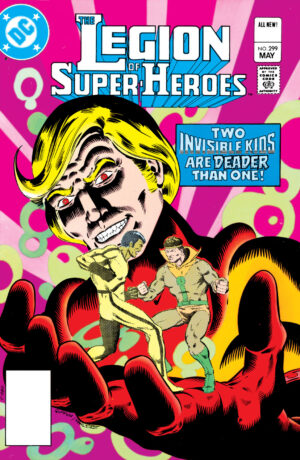
Is that specific enough for you?
What I mean is this: You’ve now got a terrific outline so you can assemble whatever it is your assembling, whether that’s a guide, a personal reading list, or a shelf. Now it’s time to assemble. Use your outline as a checklist and start filling it out.
Your guide might need links. You might want to screenshot key panels. You might be writing summaries or reviews. You might need to actually buy the books.
Or, maybe you have everything you needed from your research, but it’s all in an unorganized folder on your computer or in a stack next to your bookshelf.
It’s time to bring order to the chaos.
The best advice I can give you on this step is: pace yourself!
If you’re working on a guide or list, divide it into sensible chunks so you can feel a sense of accomplishment after you add stuff to every chunk. Give your eyes breaks!
If you’re working on a digital or physical collection, it’s time to do triage. Usually trying to buy everything all at once usually leads to over-spending, duplication, and trouble keeping things organized. Even if you have an unlimited budget, buying everything at once isn’t always a great plan unless you have a unique chance to scoop up a complete, pre-curated collection.
(I’ve done that once or twice, like the time I picked up someone’s run of every Wonder Woman comic from 1987 to 2010. Be open to serendipitous opportunities, but recognize not every sale is a “I MUST BUY IT ALL” situation.)
What do you want to read the most? What is close to going out of print? What’s on sale right now? Complex eBay searches with “or” and excluded terms are your friends!
Click for insider info on Excalibur and LOSH
7. Conduct a clean-up pass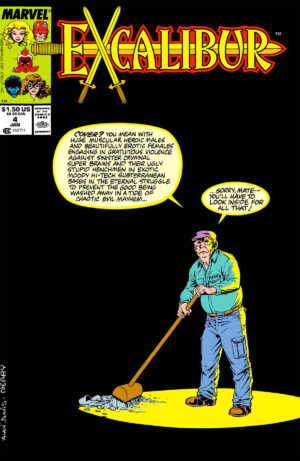
Now it’s finally time to do that long-awaited re-organization.
For a physical collection, that means reviewing to make sure you don’t have any gaps or duplicates.
For a digital list, this means confirming the order and proof-reading.
Here’s a pair of hot tips from my life as a professional proof-reader:
1. Try proofing in a different format than you compiled. If you wrote on screen, print out for your proof-read. If you kept track of everything with handwritten notes, try typing it up. If your eyes are tired of looking at your shelf, take a picture and look at it on screen.
2. Proofing from bottom to top (or in the opposite direction of the written language) can help to turn off the part of your brain that glossed over errors or omissions before. When you read things in order, your brain fills in gaps for you.
(That’s true of both words and narrative. Science shows if a wrod has the rgiht frsit and last ltetres your brain can still figure it out from context. See?)
Click for insider info on Excalibur and LOSH
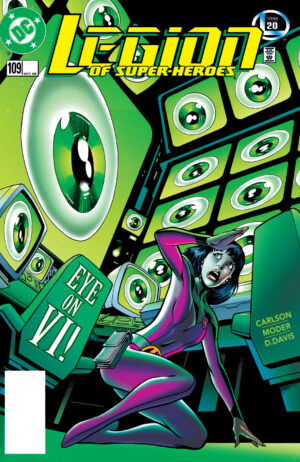
8. Consider the meta-data
This might sound a little whacky, but hear me out: What is the information that surrounds this new guide, list, or collection?
If you published a guide on the web, did you remember to add a featured image, a descriptive URL, or an excerpt?
If you built a list for your own enjoyment, did you save it somewhere the file won’t be easily lost?
Did you add it to your list of lists so you can find it again later?
(Do you need to make a list of lists?)
If you built a digital or physical collection, did you track or check-off what you bought? Do you use an inventory app like CLZ? Do you need to make digital back-ups or add your physical collection to your Renter’s insurance?
Click for insider info on Excalibur and LOSH
9. Enjoy! (No, really! Make a plan for enjoying this hard work.)

Now that you put in the effort, you should experience the fruits of your labor. Don’t let all of your hard work be for naught!
If you made a guide or reading list, have you published it somewhere? Even if you don’t want to maintain your own blog, there are tons of forums and Reddit communities that might dig your work.
Another option is to make a spiffy graphic version of your list to release into the wilds of the internet – just be prepared to see it referenced years from now in the unlikeliest of places!
If you assembled a digital or physical collection, it’s time to get reading! I’ll write another post about tactics to read more, but at least pick up the first book from your list and flip through the initial issues – you’ve earned it!
Click for insider info on Excalibur and LOSH
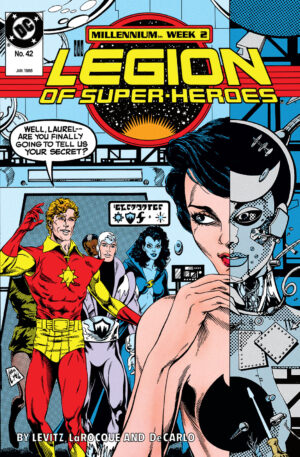
10. Schedule your first check-up
Oh, did you think enjoying things meant you were finished?
It might. If you mapped a completed volume, appearances in a certain time period, or a series that has already been fully collected, you could be done.
However, if you’re working on an ongoing property, or one where new collections or formats are still coming out, I recommend putting a reminder on your calendar to repeat these steps anywhere from six months to two years from now.
There are always new comics and collections being solicited, and we live in an age of constant revivals and reboots. Even something that seemed thoroughly completed like Locke & Key will see new formats or even new material.
If you want your guide, list, or collection to stay up to date, it will require some occasional maintenance.